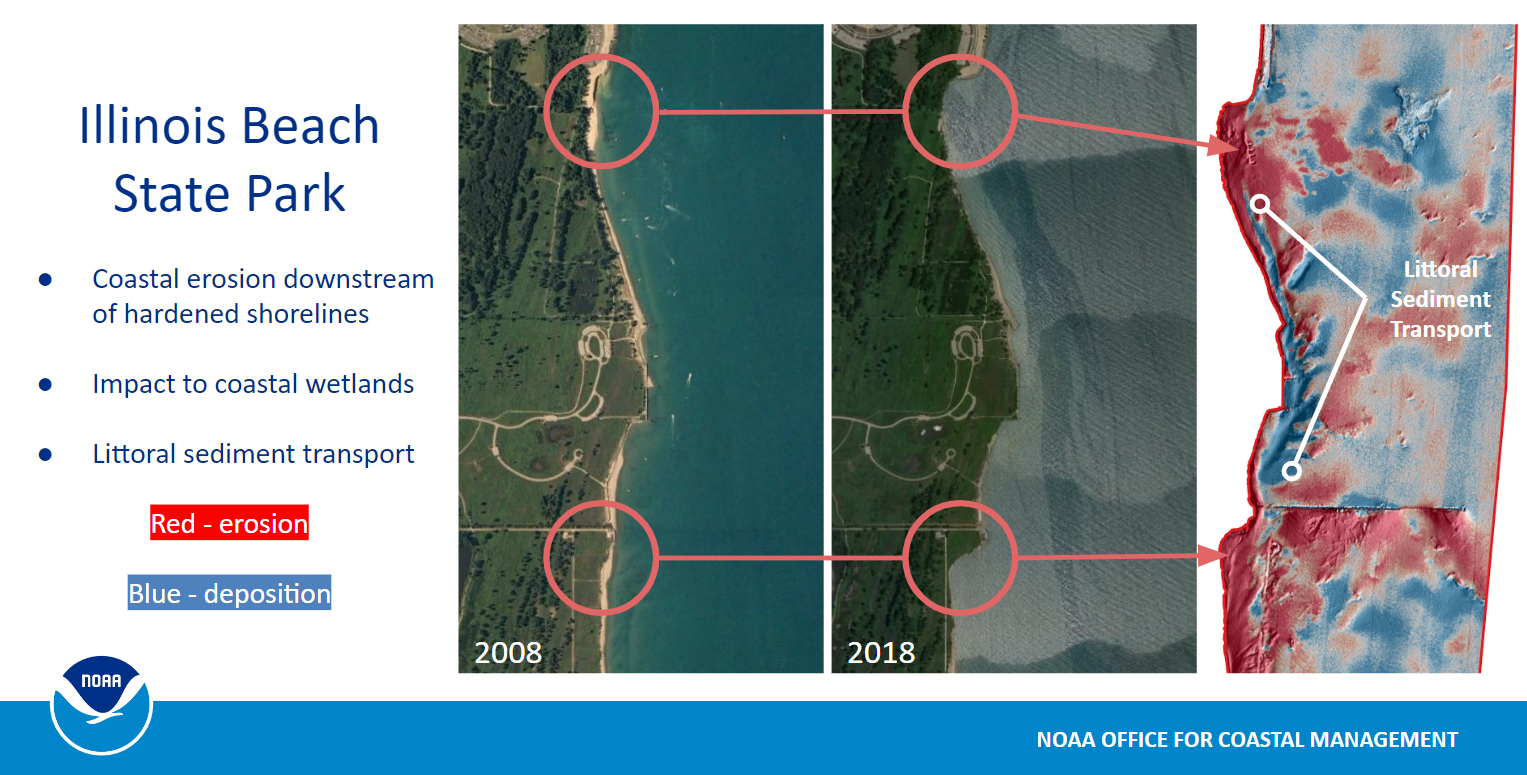Restoration Efforts for Great Lakes Shoreline
The Takeaway: This shoreline report, co-authored by a Digital Coast scientist, makes plain the critical importance of NOAA’s nature-based restoration projects in the Great Lakes region.

Many Great Lakes property owners and communities have armored their shorelines with seawalls, bulkheads, and other hardened materials. The unfortunate result is wider ecosystem damage that harms habitat, downstream properties, and the resilience of communities. This is the take-home message of a hardened shoreline data analysis for 2009-2021 that was co-authored by geospatial data experts from Environment and Climate Change Canada and NOAA’s Digital Coast. The downbeat forecast makes NOAA’s investments in nature-based shoreline restoration all the more crucial for rebuilding ecological health and hazard resilience in the Great Lakes region.
“Shorelines are naturally dynamic and evolve over time,” says Brandon Krumwiede, report co-author and Great Lakes regional geospatial coordinator at NOAA’s Office for Coastal Management. “Any time we try to limit or alter these dynamic processes, we introduce lasting impacts elsewhere within the coastal system.”
While the analysts gave Great Lakes shorelines an overall rating of “fair,” the trend for shorelines is “deteriorating” because of a net increase in the percentage of hardened shorelines categorized as “highly protected” or “moderately protected.” Canada’s new Lake Superior shoreline data sets will be added in 2023. The additions are unlikely to change the “deteriorating” status.
A way back to ecological health
Several nature-based shoreline restoration projects are underway in the Great Lakes region, aided by NOAA data resources and workshop assistance. Examples include an Illinois initiative along Lake Michigan’s South Lagoon; a Michigan project along Lake Michigan beachfront in the City of Petoskey; and two New York projects along Lake Erie, on Grand Island and at the Tifft Nature Preserve. Project partners include the Coastal States Organization and the Great Lakes and St. Lawrence Cities Initiative.
Also making headway are projects in Minnesota and Illinois. Partners led by the Minnesota Lake Superior Coastal Program will select and install living shoreline areas at four sites, and a project assisted by the Illinois Coastal Management Program will identify nearshore restoration strategies at Illinois Beach State Park, along Lake Michigan.
Findings from the Great Lakes shoreline data analysis are featured in the multi-partner State of the Great Lakes 2022 Report. (2022)
Partners: Great Lakes Restoration Initiative, Coastal States Organization, Great Lakes and St. Lawrence Cities Initiative, Illinois Coastal Management Program, Minnesota Lake Superior Coastal Program, NOAA Office for Coastal Management
PRINT